The world of culinary innovation has been revolutionized by contact grills, small yet mighty kitchen appliances that have transformed the way we cook and enjoy our meals. As these devices continue to gain popularity across the globe, understanding their market dynamics and the factors influencing their growth is paramount. This article delves into the intricate details of the contact grill industry, exploring its trajectory, the latest technological advancements, and the evolving preferences of consumers. It also examines the challenges and opportunities faced by manufacturers, the pivotal role of contact grill factories in the supply chain, and the impact these appliances have on global cuisine.
Introduction to Contact Grill Market Dynamics
The contact grill market has been experiencing a surge in popularity, driven by the growing demand for healthier cooking methods and the convenience it offers to consumers. This dynamic sector is witnessing a blend of technological advancements, shifting consumer preferences, and evolving market trends that are reshaping the industry landscape.
Contact grills, also known as flat-top grills or countertop grills, have gained significant traction due to their ability to mimic the cooking experience of a traditional grill without the need for an outdoor space. These compact appliances are designed to cook food evenly, often resulting in a juicy and flavorful outcome that appeals to health-conscious consumers looking to reduce oil usage.
In recent years, the contact grill market has seen a steady increase in sales, with both established players and new entrants vying for a share of this burgeoning market. The demand is particularly strong in Europe and North America, where consumers are becoming more health-aware and seeking out alternative cooking solutions.
One of the key factors contributing to the growth of the contact grill market is the rise of convenience cooking. Busy lifestyles have led to a preference for quick and easy meal preparation, and contact grills fit this bill perfectly. They are versatile, allowing users to cook a variety of foods, from sandwiches and burgers to steaks and vegetables, all on a single cooking surface.
The contact grill market is also being influenced by a wave of innovation. Manufacturers are continuously introducing new features and technologies to enhance the cooking experience. For example, some models now come with adjustable temperature controls, non-stick surfaces, and even Bluetooth connectivity, which allows users to control the grill remotely via their smartphones.
In terms of market segmentation, contact grills are being tailored to meet the specific needs of different consumer groups. There are models designed for casual home use, professional-grade grills for commercial kitchens, and even compact, portable units for outdoor enthusiasts. This diversity in the market caters to a wide range of cooking preferences and budgets.
The role of contact grill factories in this market cannot be overstated. These factories are the backbone of the industry, responsible for the production and distribution of these appliances. They must balance the demands of quality, efficiency, and cost-effectiveness to remain competitive. Factories are also at the forefront of adopting new manufacturing techniques and materials to improve the durability and performance of contact grills.
Despite the growth, the contact grill market faces challenges. One of the primary concerns is the competition from other cooking appliances, such as indoor smokers and air fryers, which offer similar health benefits and convenience. Additionally, the market is sensitive to economic fluctuations, as price-sensitive consumers may delay purchases during economic downturns.
However, there are also significant opportunities for contact grill manufacturers. The health and wellness trend is expected to continue growing, and contact grills are perfectly positioned to capitalize on this. There is also a growing interest in ethnic cuisines, which can be easily replicated on a contact grill, opening up new market segments.
Data from market research firms indicates that the contact grill market is expected to grow at a steady pace over the next few years. Sales are projected to rise as more consumers become aware of the health benefits and convenience offered by these appliances. Key statistics, such as market size, growth rate, and consumer demographics, provide a clear picture of the market’s potential.
In conclusion, the contact grill market is dynamic and evolving, with a strong focus on innovation and consumer satisfaction. As the industry continues to grow, contact grill factories will play a crucial role in meeting the demands of a health-conscious consumer base. By staying ahead of market trends and embracing technological advancements, these factories can ensure their products remain at the forefront of the contact grill revolution.

Understanding the Contact Grill: A Brief Overview
Contact grills, often mistakenly referred to as George Foreman grills, have become a staple in modern kitchens. These cooking appliances are designed with a flat, ridged surface that allows for even cooking and browning on both sides of the food simultaneously. Here’s a closer look at what makes contact grills unique and why they’ve gained such popularity.
The contact grill’s design features two cooking plates that are heated to a high temperature. These plates are typically made of cast aluminum, which conducts heat efficiently. The ridged pattern on the surface not only creates those distinctive grill marks but also helps to drain excess fat away from the food, promoting healthier cooking.
One of the key benefits of a contact grill is its ability to cook food quickly and evenly. Whether you’re grilling burgers, steaks, or even vegetables, the even distribution of heat ensures that every bite is perfectly cooked. The process is also straightforward, requiring minimal flipping and turning, which is a significant time-saver compared to traditional grilling methods.
Despite their simple operation, contact grills offer a range of features that cater to different cooking preferences. Some models come with adjustable heat settings, allowing users to tailor the cooking temperature to their specific needs. Others have added functionalities such as indicator lights that show when the grill is ready to use or non-stick coatings that reduce the need for cooking spray or oil.
The compact size of contact grills also makes them a practical choice for those with limited kitchen space. They can often be stored upright or placed on a countertop without taking up too much room. This portability means that contact grills are not just for outdoor cooking; they can easily be brought into the home for quick and convenient indoor grilling.
While the contact grill’s flat surfaces are ideal for meats and vegetables, they aren’t suitable for everything. For instance, foods like hot dogs, corn, or onions might require the traditional method of grilling, where they need to be turned to ensure even cooking. However, many contact grill models have removable inserts that can be used for these types of foods, offering versatility without sacrificing the benefits of the contact grill design.
Safety is another area where contact grills shine. With a flat cooking surface and a lack of open flames, these grills eliminate the risk of flare-ups that can occur with traditional charcoal or gas grills. The cooking process is enclosed, which means that grease and food drippings are less likely to ignite, making them a safer option, especially for households with children.
When it comes to cleaning, contact grills are a breeze. The flat surfaces and often removable cooking plates make for easy wipe-downs and clean-ups. Many models are also dishwasher-safe, further simplifying the post-cooking process. This ease of cleaning is a significant factor for consumers looking for a low-maintenance cooking solution.
In recent years, there has been a surge in the innovation within the contact grill market. Manufacturers have introduced a variety of features to make these grills even more user-friendly and efficient. From electric grills that can be controlled via a smartphone app to those with integrated thermometers for precise temperature control, the options are vast.
For those who enjoy entertaining or hosting, contact grills can be a great asset. They are perfect for preparing food in large quantities, and their ability to cook multiple items at once can handle crowds without compromising on the quality of the meal.
Despite their many advantages, contact grills are not without their drawbacks. One common issue is that they can be heavy, and some models can be noisy when in operation. Additionally, the lack of direct flame might not provide the same level of flavor as traditional grilling methods, although many users find that the taste is more than sufficient.
In summary, contact grills are a versatile and convenient cooking tool that has captured the hearts of grill enthusiasts around the world. With their even cooking, safety features, and ease of use, they’ve become a staple in modern kitchens, and their continued popularity is a testament to their effectiveness in the culinary world.

Market Overview in Europe and North America
The European contact grill market has witnessed a significant rise in popularity, driven by the increasing demand for healthy and convenient cooking methods. With a focus on outdoor grilling, this segment is particularly strong in countries like Germany, Italy, and the UK. North America, on the other hand, has seen a steady growth in the indoor contact grill market, with a strong preference for sleek, space-saving designs.
In Europe, the market for contact grills is influenced by a variety of factors. The continent’s love for outdoor living and social gatherings has made gas-powered contact grills a favorite for backyard barbecues and garden parties. These appliances offer a consistent cooking surface that is perfect for grilling a variety of meats, vegetables, and even cheeses. The rise in health consciousness has also played a role, as contact grills are often associated with healthier cooking options compared to traditional open-flame grills.
The North American market, however, is more inclined towards electric contact grills, which are ideal for indoor use. The convenience of electric models, with their non-stick surfaces and adjustable heat settings, has made them a staple in many American kitchens. Brands like George Foreman have become synonymous with contact grilling, thanks to their user-friendly designs and effectiveness in producing perfectly grilled meals.
Within Europe, the German market stands out for its high-quality products and innovation in the contact grill sector. German consumers are known for their preference for durable and efficient appliances, and the contact grill market reflects this trend. Italian contact grills, on the other hand, often feature sleek designs and are associated with the country’s culinary traditions, appealing to both Italian expatriates and international food enthusiasts.
In the UK, the contact grill market is diverse, with a blend of traditional and modern appliances. The British weather, which can be unpredictable, has led to a preference for indoor cooking solutions, including contact grills. These appliances are particularly popular in urban areas where space is at a premium, and outdoor cooking isn’t always an option.
Moving to North America, the electric contact grill market is dominated by compact and multifunctional models. The US and Canada have seen a surge in the sale of these appliances, as they cater to the busy lifestyles and health-conscious demographics. The convenience of cooking a variety of dishes in a single appliance, such as steak, chicken, and vegetables, without the need for additional oil, has been a major draw.
In terms of consumer preferences, European buyers tend to focus on the cooking performance and durability of contact grills, while North American consumers are more concerned with the ease of use and the ability to create a variety of recipes. This difference in focus is reflected in the design and features of the contact grills sold in each region.
The North American market has also seen an increase in the sale of premium contact grills, which are often equipped with advanced features like temperature control, adjustable pressure, and built-in digital timers. These high-end models cater to the segment of consumers who are willing to invest in quality appliances that offer the best of both form and function.
The market for contact grills in both Europe and North America is also influenced by seasonal trends. In Europe, the warmer months see a surge in outdoor contact grill sales, while in North America, the summer season drives the indoor contact grill market. The ability of these appliances to adapt to different cooking styles and preferences is a key factor in their widespread adoption.
In conclusion, the contact grill market in Europe and North America is a testament to the evolving culinary landscape. As consumers seek healthier cooking options and more convenient appliances, contact grills have become a popular choice. The market’s growth is fueled by a variety of factors, including cultural preferences, technological advancements, and changing lifestyles. Whether for outdoor picnics or indoor kitchen adventures, contact grills have firmly established their place in modern cooking culture.
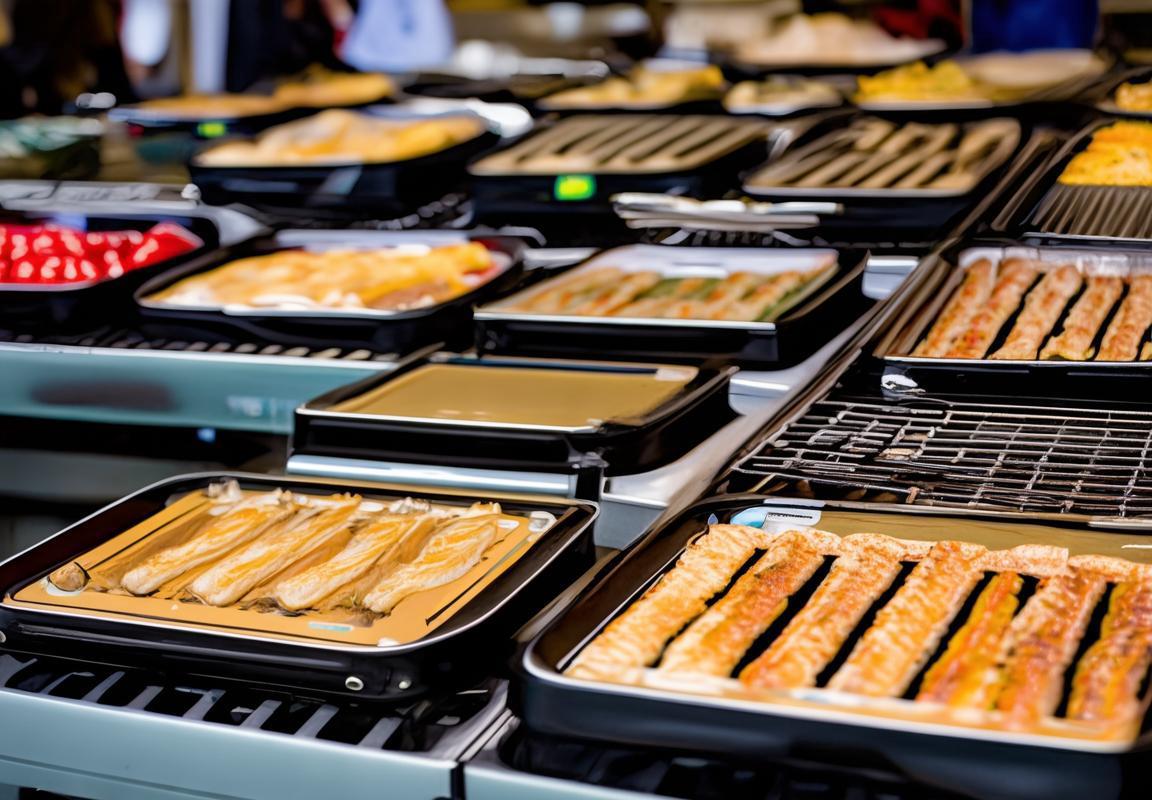
Trends Driving Growth in the Contact Grill Industry
The contact grill industry has experienced a surge in popularity, propelled by a variety of trends that are reshaping consumer preferences and market dynamics. Here’s an exploration of some of the key trends driving growth in this sector:
-
Health and Wellness AwarenessConsumers are increasingly conscious of their health and wellness, leading to a demand for cooking methods that minimize added fats and preserve the natural flavors of ingredients. Contact grills, with their ability to cook food with minimal oil, align perfectly with these health-conscious trends.
-
Convenience and SpeedIn today’s fast-paced world, convenience is king. Contact grills offer a quick and efficient way to cook a variety of foods, from meats to vegetables, in a short amount of time. This convenience factor is a significant driver for the growth of the contact grill market.
-
Outdoor Cooking CultureThe growing popularity of outdoor cooking and entertaining has spurred the demand for versatile cooking appliances. Contact grills are a staple in many outdoor kitchens, providing a convenient way to cook delicious meals without the need for a traditional grill.
-
Smart Technology IntegrationModern contact grills are not just cooking appliances; they are smart devices. The integration of features like temperature control, digital displays, and even Wi-Fi connectivity allows users to monitor and adjust cooking settings remotely. This technological advancement is attracting tech-savvy consumers.
-
Eco-Friendly Cooking SolutionsWith environmental concerns on the rise, there’s a growing interest in eco-friendly cooking methods. Contact grills, which use less energy and produce less smoke than traditional grills, are seen as more sustainable options. This eco-conscious trend is contributing to the industry’s growth.
-
Variety of Cooking OptionsContact grills offer a diverse range of cooking options, from searing steaks to grilling vegetables and even baking desserts. This versatility appeals to a broad audience, as it allows users to experiment with different recipes and cooking techniques.
-
Popularity of Grilling as a LifestyleGrilling has evolved from a simple cooking method to a lifestyle choice. The contact grill industry is capitalizing on this trend by offering a wide array of designs, from sleek and modern to rustic and traditional, catering to different tastes and preferences.
-
Influencer Marketing and Social MediaSocial media influencers and food bloggers are playing a significant role in promoting contact grills. By showcasing the ease of use, variety of recipes, and the delicious results, these influencers are driving consumer interest and sales.
-
Increased Focus on Quality and DurabilityAs the market grows, consumers are becoming more discerning about the quality and durability of their cooking appliances. High-quality contact grills with robust construction and long-lasting components are gaining popularity.
-
Expansion into New MarketsThe contact grill industry is not limited to developed markets. There’s a growing interest in emerging markets, where the middle class is expanding and there’s a rising demand for modern kitchen appliances. This expansion is a significant growth driver for the industry.
These trends are not only shaping the current landscape of the contact grill industry but are also setting the stage for future innovations and market expansion. As consumer preferences continue to evolve, the contact grill industry is poised to adapt and thrive.
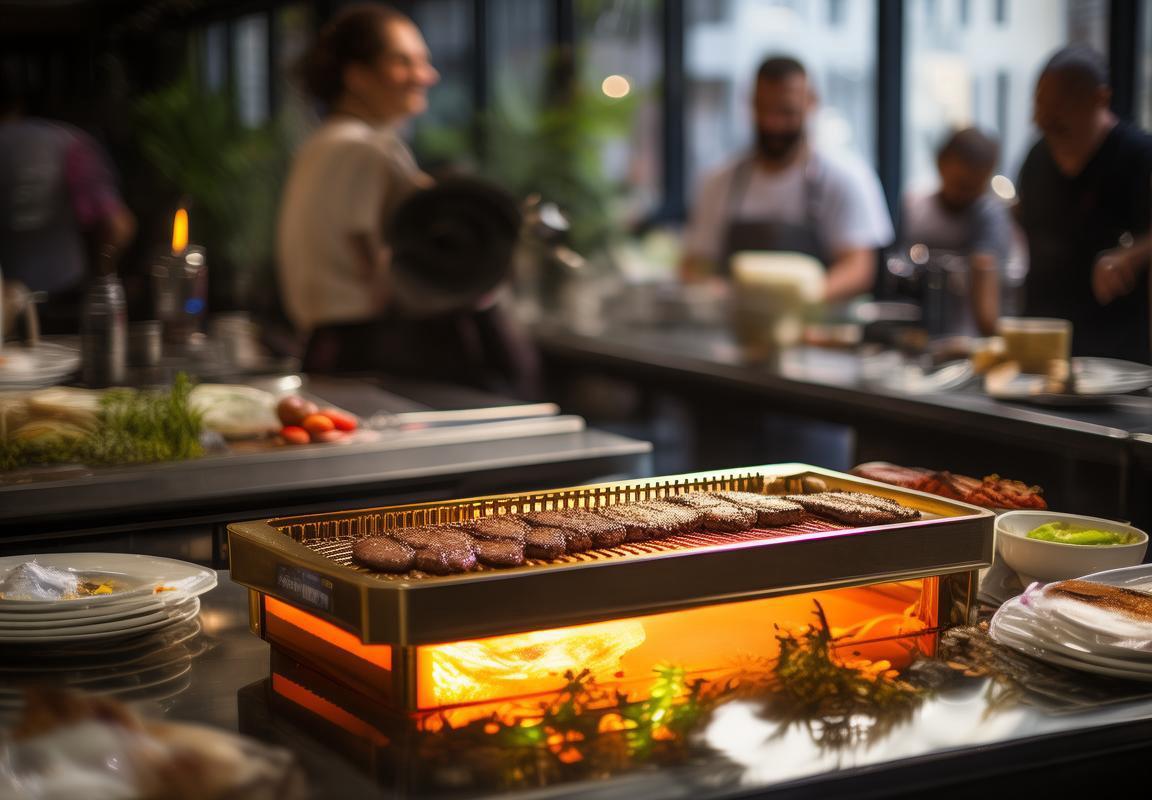
Innovations and Technological Advancements
In recent years, the contact grill industry has witnessed a surge in innovation and technological advancements, reshaping the way consumers experience cooking. These developments have not only enhanced the functionality and efficiency of contact grills but have also expanded their appeal to a broader audience. Here’s a glimpse into some of the key innovations and technological breakthroughs that are driving the industry forward.
The integration of smart technology has been a game-changer for contact grills. Modern grills now come equipped with digital temperature controls, allowing users to precisely manage heat settings. This feature ensures that food is cooked to perfection, with the ability to adjust the temperature for different types of meat and cooking times.
One of the most significant advancements is the introduction of non-stick surfaces that are more durable than traditional coatings. These surfaces not only make cleaning easier but also prevent food from sticking, allowing for healthier cooking with less oil. The innovation in materials has led to a longer lifespan for contact grills, reducing the need for frequent replacements.
The design of contact grills has evolved to include features that cater to health-conscious consumers. Grills with adjustable cooking plates can now be set to different heights, allowing for a variety of cooking methods such as grilling, searing, and even steaming. This versatility means that users can enjoy a diverse range of dishes without the need for multiple appliances.
Energy efficiency has become a focal point in the development of contact grills. New models are designed to heat up faster and maintain a consistent temperature more effectively, reducing energy consumption. This not only saves on utility bills but also aligns with the growing global trend towards sustainability.
In terms of safety, advancements have been made to prevent accidental burns and fires. Grills now come with cool-touch handles and surfaces, as well as automatic shut-off features that activate when the grill is left unattended for an extended period. These safety features provide peace of mind for users who want to enjoy outdoor cooking without the risk of accidents.
The inclusion of additional features like built-in thermometers and timers has made cooking more intuitive. Users can now monitor the internal temperature of their food and set specific cooking times, ensuring that the food is cooked to the desired level of doneness. This level of control was once only possible with professional-grade equipment.
The rise of wireless connectivity has also influenced the contact grill market. Some models now offer Bluetooth compatibility, allowing users to control the grill remotely through their smartphones. This innovation is particularly appealing to those who enjoy grilling but are not always present to tend to the grill.
Another area of innovation is the development of modular components. Contact grills can now be customized with different attachments, such as pizza ovens, waffle irons, and sandwich presses. This modular approach allows for a single grill to serve multiple purposes, reducing the need for additional kitchen appliances.
In the realm of aesthetics, contact grills have seen a shift towards sleeker designs and finishes. Manufacturers are focusing on creating appliances that not only perform well but also look attractive in any kitchen setting. The use of high-quality materials and modern design elements has made contact grills a stylish addition to any countertop.
Lastly, the rise of electric contact grills has been a significant trend. With the decline in popularity of traditional charcoal and gas grills, electric models offer a more convenient and environmentally friendly alternative. They provide consistent heat, require less maintenance, and can be used indoors, which is a major advantage for apartment dwellers and those without outdoor space.
These innovations and technological advancements have propelled the contact grill industry forward, making it a dynamic and rapidly evolving market. As consumers continue to seek out appliances that offer convenience, efficiency, and versatility, the contact grill remains a popular choice for both casual and seasoned grillers alike.
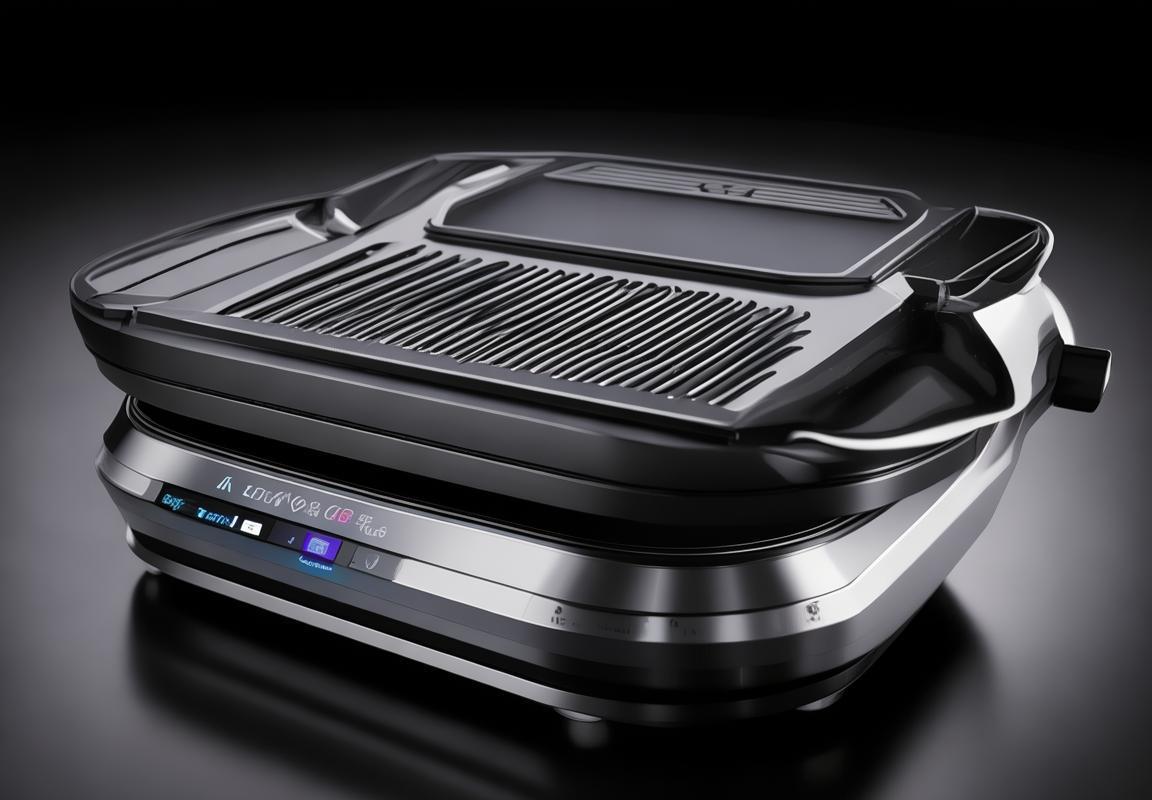
Consumer Preferences and Market Segmentation
In the evolving landscape of the contact grill industry, consumer preferences and market segmentation play a pivotal role in shaping trends and driving sales. Understanding these dynamics is crucial for manufacturers and retailers alike. Here’s a closer look at how these factors are influencing the market.
Consumers are increasingly seeking convenience and health-conscious options in their cooking appliances. Contact grills, with their ability to cook food with minimal oil, have become a popular choice for health-aware individuals. The preference for healthier cooking methods has led to a surge in demand for contact grills that offer adjustable temperature controls, allowing users to tailor their cooking to their dietary needs.
Market segmentation is becoming more nuanced, with consumers falling into various categories based on their lifestyle, age, and cooking habits. For instance, younger demographics, often labeled as “millennials,” are more likely to be influenced by social media trends and are drawn to products that offer a combination of convenience and style. This group is particularly interested in contact grills that come with built-in features like LED lighting or Bluetooth connectivity for remote temperature control.
Senior citizens, on the other hand, may prioritize ease of use and safety. They are more likely to opt for contact grills with simple interfaces and non-slip bases. Additionally, the market is seeing a rise in demand for contact grills that cater to specific dietary requirements, such as those designed for gluten-free or vegetarian cooking.
The rise of “foodies” and home chefs has also impacted market segmentation. These consumers are not just looking for a cooking appliance; they are seeking a tool that can help them achieve restaurant-quality results at home. As such, they are drawn to contact grills with advanced features like variable heat settings, adjustable cooking plates, and even built-in timers and temperature sensors.
Another segment to consider is the “budget-conscious” consumer. This group is always on the lookout for value for money. They are more likely to be interested in contact grills that offer a good balance between price and performance, rather than those loaded with high-end features.
In terms of cooking habits, there’s a growing trend of “meal prepping” and “batch cooking.” Contact grills that can handle large quantities of food or that offer multi-level cooking capabilities are becoming increasingly popular among those who want to prepare meals in bulk for the week ahead.
The preference for contact grills also varies geographically. In Europe, there’s a strong emphasis on eco-friendly and sustainable products. Consumers are more likely to choose contact grills made from recycled materials or with energy-saving features. In North America, there’s a greater focus on innovation and technology, with consumers often willing to invest in the latest gadgets that promise to enhance their cooking experience.
The rise of online shopping has also had a significant impact on consumer preferences and market segmentation. Online retailers are able to offer a wider range of products, including niche brands and international models that may not be available in physical stores. This has allowed consumers to explore different options and find the perfect contact grill that aligns with their unique preferences and needs.
In conclusion, the contact grill industry is witnessing a diverse array of consumer preferences and market segments. From health-conscious consumers seeking convenience to tech-savvy individuals looking for innovative features, the market is becoming more segmented than ever. Understanding these segments is key to manufacturers and retailers aiming to capture a larger share of this dynamic and growing market.
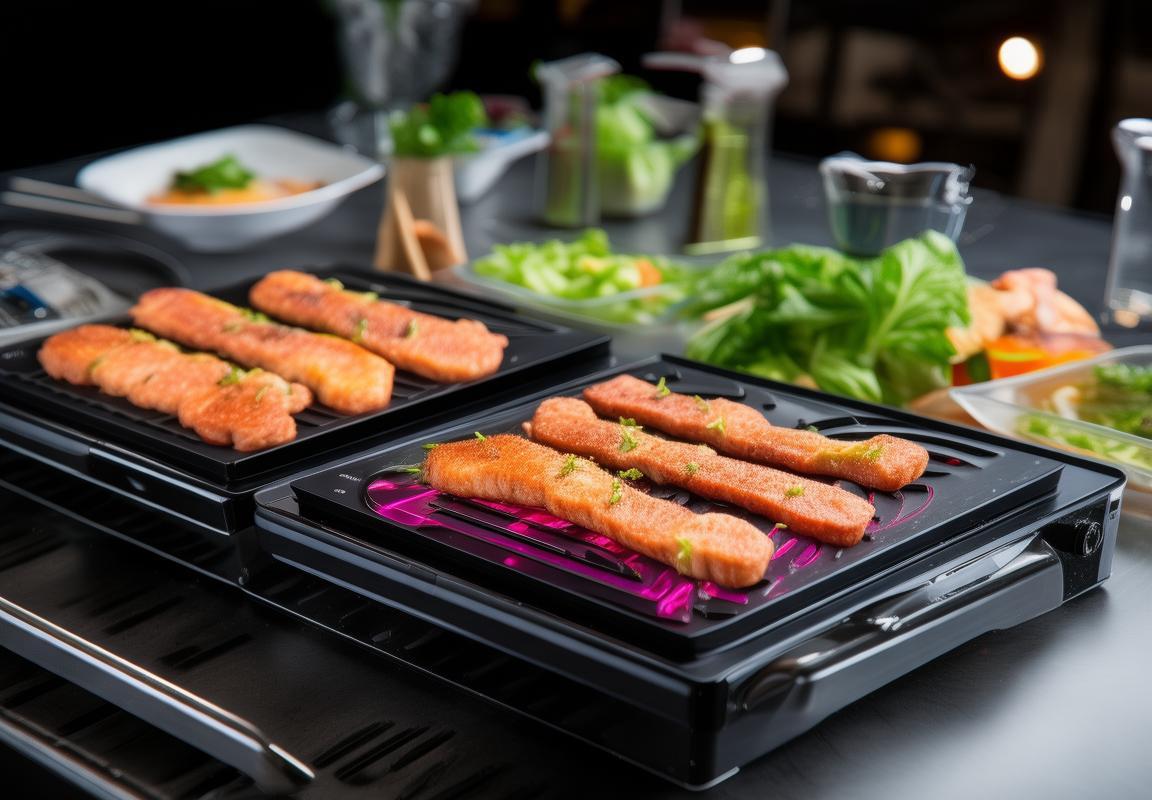
The Role of Contact Grill Factories in Supply Chain
In the intricate web of the culinary equipment industry, contact grill factories play a pivotal role in the supply chain. These factories are not just manufacturers; they are the beating heart of a sector that is rapidly evolving. Here’s an insight into how contact grill factories contribute to the supply chain, from design to distribution.
Grill factories often start with a keen eye for market trends and consumer demands. They understand that the key to staying competitive is to be at the forefront of innovation. As such, they invest heavily in research and development (R&D) to create contact grills that not only meet but exceed customer expectations. This R&D focus ensures that the products emerging from these factories are equipped with the latest features, such as non-stick coatings, adjustable heat settings, and sleek designs that appeal to health-conscious consumers.
Once the design phase is complete, the supply chain truly begins to take shape. Contact grill factories collaborate with suppliers to source high-quality materials that are both durable and eco-friendly. The use of sustainable materials is not just a trend but a necessity in today’s market, where consumers are increasingly conscious of their environmental footprint. This commitment to sustainability extends to the manufacturing process itself, with many factories adopting energy-efficient technologies to reduce their carbon footprint.
The assembly line within a contact grill factory is a marvel of modern engineering. Workers, often trained to the highest standards, meticulously piece together the various components of the grills. Quality control checks are integrated throughout the process, ensuring that each unit meets stringent standards before it moves to the next stage. This attention to detail is crucial, as the reliability and performance of the contact grills can greatly influence the reputation of the brand.
Once assembled, the grills are packaged with care. The packaging design is not just about protecting the product; it also serves as a marketing tool, conveying the brand’s values and the unique selling points of the product. Efficient packaging also plays a role in reducing waste and optimizing shipping logistics, as contact grills can be quite heavy and bulky.
Distribution is another critical aspect of the supply chain managed by contact grill factories. They work closely with logistics providers to ensure that their products reach retailers and end-users in a timely and cost-effective manner. The logistics network must be robust enough to handle both domestic and international shipping, considering the global nature of the market for contact grills.
In the retail landscape, contact grill factories often provide a level of support that goes beyond the physical product. They may offer training materials for retailers, helping them to showcase the product effectively to customers. Additionally, they may provide marketing resources or co-branded materials to enhance the brand’s presence in the market.
The role of contact grill factories in the supply chain doesn’t end with the sale. They often engage in after-sales service and customer support, which is essential for building long-term relationships with customers. This support can range from handling warranty claims to providing maintenance tips and troubleshooting guides. By ensuring customer satisfaction post-purchase, contact grill factories help to foster brand loyalty and repeat business.
Furthermore, contact grill factories are increasingly involved in the data-driven aspect of the supply chain. By integrating IoT (Internet of Things) technology into their products, they can collect valuable data on usage patterns, consumer preferences, and maintenance needs. This data can then be used to inform future product design, improve supply chain efficiency, and anticipate market trends.
In conclusion, the role of contact grill factories in the supply chain is multifaceted. From the initial design and sourcing of materials to the final distribution and customer support, these factories are integral to the success of the contact grill industry. Their commitment to quality, innovation, and customer satisfaction ensures that the products they manufacture not only meet but exceed the expectations of consumers around the world.
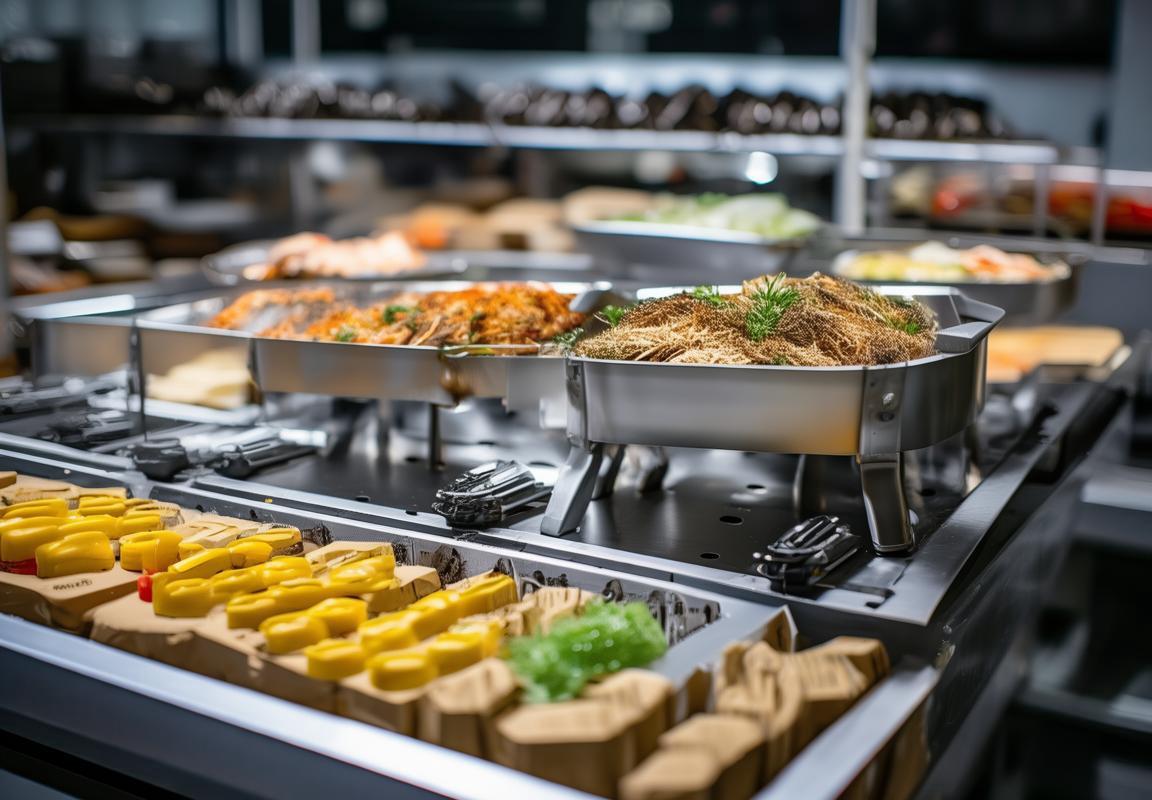
Challenges and Opportunities for Contact Grill Manufacturers
In the dynamic world of contact grill manufacturing, several challenges and opportunities coexist, shaping the landscape for these appliance producers. From evolving consumer demands to global market trends, here’s an insight into the multifaceted world that contact grill manufacturers navigate.
The rise of health-conscious consumers has sparked a demand for cooking methods that promote healthier eating habits. Contact grills, with their ability to cook with less oil and fat, have become increasingly popular. This shift in consumer preference presents a significant opportunity for manufacturers to innovate and offer products that cater to these healthier living trends.
Manufacturers are also facing the challenge of adapting to changing regulations and standards. As health and safety standards evolve, grills must meet new requirements, which can require significant design and production adjustments. Navigating these changes while maintaining quality and efficiency is a delicate balance for contact grill manufacturers.
Innovation in materials and design is a key opportunity for manufacturers. The introduction of non-stick coatings, eco-friendly materials, and advanced heat distribution systems has not only improved user experience but also expanded the market appeal. The challenge here lies in staying ahead of the curve and continuously developing new features that resonate with consumers.
The globalization of the contact grill market has opened doors for manufacturers to expand their reach. As these appliances become more popular worldwide, there’s a growing opportunity to tap into new markets and cultures. However, this also means manufacturers must consider localization strategies, adapting products to meet regional preferences and regulations.
Energy efficiency is another area where contact grill manufacturers can seize opportunities. As environmental concerns rise, consumers are seeking appliances that minimize energy consumption. This presents an opportunity to develop more energy-efficient grills, though it requires overcoming the challenge of balancing efficiency with cooking performance.
E-commerce has transformed the retail landscape, and contact grill manufacturers are not immune to this shift. Online sales platforms have expanded the customer base, allowing manufacturers to reach a global audience directly. The challenge is to leverage these channels effectively, ensuring a seamless online shopping experience while managing logistics and customer service.
The rise of smart technology in kitchen appliances has introduced a new dimension to the contact grill market. Smart grills that can be controlled via smartphone apps offer convenience and added functionality. This is an opportunity for manufacturers to integrate smart features that enhance user experience and differentiate their products in a crowded market. However, the challenge is to develop technology that is accessible and intuitive, avoiding complexity that could alienate consumers.
Sustainability has become a cornerstone for many businesses, and contact grill manufacturers are no exception. Opportunities arise from adopting greener production practices and offering products that are recyclable or made from sustainable materials. The challenge is to balance environmental responsibility with cost and product lifecycle considerations.
Finally, the competitive nature of the market demands that contact grill manufacturers continually seek ways to innovate and improve. From the development of new materials to the enhancement of user interfaces, there’s a constant push to offer something new or better. This competition fosters innovation but also poses the challenge of maintaining profitability in a market that’s always evolving.
In summary, contact grill manufacturers are faced with a mix of challenges and opportunities that revolve around consumer preferences, technological advancements, market dynamics, and global trends. Navigating these complexities requires a strategic approach that focuses on innovation, efficiency, sustainability, and customer satisfaction.

Data-Driven Insights: Key Market Statistics
In the ever-evolving landscape of the contact grill industry, data-driven insights play a pivotal role in shaping market strategies and product development. Here, we delve into some of the key market statistics that reveal the pulse of the industry.
Grill Sales by RegionThe global contact grill market is witnessing a significant surge in demand, with Europe and North America leading the charge. According to recent reports, Europe accounts for a substantial share of the market, driven by the region’s preference for outdoor cooking and the growing popularity of health-conscious eating habits. In North America, the market is bolstered by a strong consumer base that values convenience and flavor, leading to a steady increase in sales.
Market Growth RateThe contact grill market is projected to grow at a remarkable rate over the next few years. Analysts predict that the market will expand at a compound annual growth rate (CAGR) of around 5-7% from 2020 to 2025. This growth is attributed to the increasing awareness of healthy cooking methods and the rising demand for outdoor cooking equipment.
Consumer DemographicsThe demographics of contact grill consumers are shifting, with a notable increase in younger demographics adopting the technology. Millennials and Gen Z are driving this trend, attracted by the ease of use, variety of cooking options, and the ability to create restaurant-quality meals at home. This demographic shift is influencing product design and marketing strategies.
Price Points and Market PenetrationContact grills are available across a wide price range, from budget-friendly models to high-end, premium options. The market penetration of mid-range grills has been particularly strong, as they offer a balance between affordability and advanced features. This segment has seen a steady increase in sales, reflecting the preference for value-for-money products.
Product Features and TrendsKey features such as non-stick coatings, adjustable temperature controls, and removable drip pans are increasingly becoming standard in contact grill models. Smart technology integration, including Wi-Fi connectivity and Bluetooth compatibility, is also gaining traction, allowing users to control their grills remotely. The trend towards healthier cooking methods, such as grilling instead of frying, is another factor driving the demand for contact grills.
Market Share by ManufacturerSeveral key players dominate the contact grill market, with varying degrees of market share. Companies like George Foreman, Breville, and Cuisinart have established strong positions due to their brand recognition and product innovation. However, there is also room for new entrants to capture market share by offering unique features or competitive pricing.
Regulatory Environment and Safety StandardsThe contact grill industry is subject to stringent safety and regulatory standards. Manufacturers must comply with various health and safety regulations, which can vary by region. This includes certifications for electrical safety, fire resistance, and food safety. Adherence to these standards is crucial for maintaining consumer trust and avoiding legal repercussions.
E-commerce and Online SalesThe rise of e-commerce has had a significant impact on the contact grill market. Online sales have grown exponentially, with many consumers opting to purchase their grills through online retailers. This trend is likely to continue, as it offers convenience, competitive pricing, and access to a wider range of products.
Environmental Concerns and SustainabilityAs environmental concerns rise, manufacturers are increasingly focusing on sustainability. This includes the use of eco-friendly materials, energy-efficient designs, and responsible manufacturing processes. Consumers are also becoming more aware of these factors, which can influence purchasing decisions.
In conclusion, the contact grill market is characterized by dynamic growth, diverse consumer preferences, and a competitive landscape. Data-driven insights into market statistics provide a clear picture of the industry’s direction and opportunities for manufacturers looking to innovate and succeed.
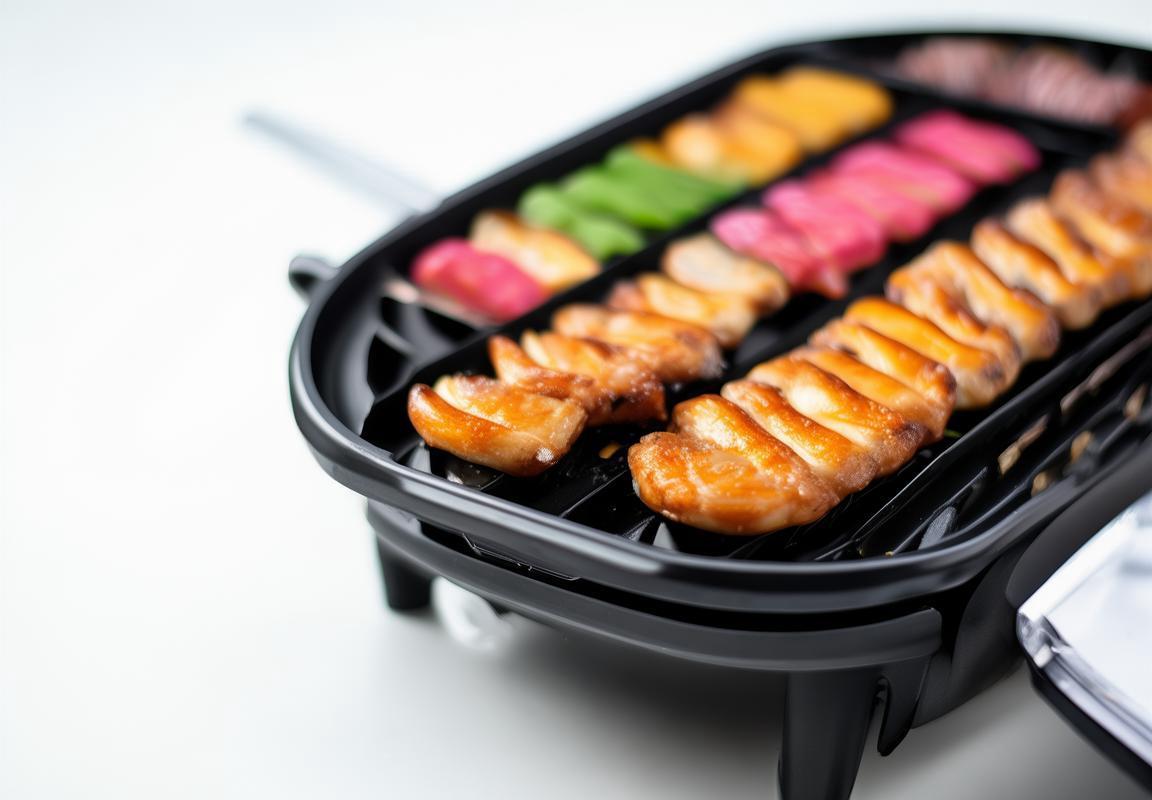
Expert Predictions for the Future of Contact Grill Market
In the ever-evolving landscape of the contact grill market, experts have offered a range of predictions that paint a picture of what the future might hold. From technological breakthroughs to shifting consumer preferences, here’s a look at some of the key insights from industry professionals.
Grill Technology IntegrationThe integration of smart technology is a trend that’s likely to persist. Experts predict that contact grills will become even more connected, with features like remote control cooking, real-time temperature monitoring, and even AI-driven recipes. This integration will not only enhance user convenience but also cater to the growing demand for personalized cooking experiences.
Health and Wellness FocusWith health consciousness on the rise, contact grills that promote healthier cooking methods are expected to gain traction. Manufacturers are likely to focus on developing non-stick surfaces that require less oil, thereby reducing the calorie count of grilled meals. Additionally, features like adjustable heat settings to control the level of charring will become more common, appealing to consumers who are wary of excessive smoke and carcinogens.
Sustainability and Eco-Friendly DesignsThe environmental impact of kitchen appliances is becoming a significant factor in consumer purchasing decisions. Contact grill manufacturers are anticipated to respond by incorporating more sustainable materials and energy-efficient designs. This could include the use of recycled plastics, energy-saving modes, and longer-lasting components, all aimed at reducing the carbon footprint of their products.
Global Market ExpansionWhile contact grills have been popular in certain regions, there’s a potential for significant growth in emerging markets. Experts suggest that as these markets become more affluent, there will be an increased interest in high-quality cooking appliances. This expansion could lead to the adaptation of contact grills to cater to local tastes and cooking styles, potentially sparking a global culinary revolution.
Culinary VersatilityThe ability to mimic various cooking styles is a key factor in the success of contact grills. Experts foresee a trend where grills can not only sear and grill but also bake, roast, and even smoke. This versatility will make them more appealing to a broader audience, including those who might not typically use a grill.
Customization and PersonalizationPersonalization is becoming a major driver in many industries, and the contact grill market is no exception. Manufacturers are likely to offer a wider range of grill plates and accessories to allow users to tailor their cooking experience. This could include plates with different textures for grilling, searing, or even creating a charred effect.
Regulatory Compliance and SafetyAs consumer awareness of safety and quality standards grows, contact grill manufacturers must prioritize regulatory compliance. Experts predict that there will be a greater emphasis on certifications and safety features, such as auto-shutoff functions and child safety locks, to ensure that these appliances meet the highest safety standards.
Market Saturation and CompetitionWhile the market for contact grills is growing, there’s also a risk of market saturation. As competition intensifies, experts anticipate that manufacturers will need to differentiate their products through innovation, quality, and customer service. This could lead to a consolidation of the market, with only the strongest brands surviving.
E-commerce and Direct-to-Consumer SalesThe rise of e-commerce has transformed the way consumers purchase kitchen appliances. Experts predict that direct-to-consumer sales will become more prevalent in the contact grill market. By selling directly to consumers, manufacturers can cut out the middleman, reduce costs, and build stronger relationships with their customers.
In conclusion, the future of the contact grill market is poised to be shaped by a combination of technological advancements, consumer health and wellness concerns, environmental sustainability, and the global expansion of the market. As manufacturers navigate these challenges and opportunities, they will need to remain agile and responsive to the ever-changing demands of the consumer landscape.

Conclusion: The Contact Grill Factory’s Impact on Global Cuisine
In the ever-evolving landscape of global cuisine, the impact of contact grill factories cannot be overstated. These manufacturing hubs have not only revolutionized the way we cook but have also left an indelible mark on culinary traditions worldwide. From the rise of health-conscious eating to the demand for convenience, contact grill factories have played a pivotal role in shaping the industry. Here’s a closer look at the multifaceted influence these factories have on global cuisine.
Contact grill factories have fostered a culinary revolution by popularizing healthier cooking methods. The contact grill, with its ability to cook food with minimal oil, has become a favorite among health enthusiasts. This shift towards healthier cooking has encouraged chefs and home cooks alike to explore new recipes that are lower in fat and calories, leading to a more diverse and nutritious diet across the globe.
The convenience factor is another area where contact grill factories have made a significant impact. As life becomes increasingly fast-paced, the demand for quick and easy meal options has surged. Contact grills offer a solution that fits seamlessly into this lifestyle, allowing for meals to be prepared in a fraction of the time compared to traditional cooking methods. This convenience has not only made contact grills popular in urban areas but has also influenced the way people think about cooking, encouraging them to incorporate more variety into their diets.
The global reach of contact grill factories is evident in the diverse range of products they produce. These factories cater to a wide array of tastes and preferences, from traditional recipes that have been adapted for the contact grill to entirely new dishes created specifically for this cooking method. This has led to a fusion of culinary traditions, with chefs around the world drawing inspiration from different cultures to create unique and innovative dishes.
The rise of contact grill factories has also spurred innovation in the kitchen. As these factories continue to refine their technology, they are introducing new features and functionalities that enhance the cooking experience. From adjustable heat settings to non-stick surfaces, these advancements have made contact grills more versatile and user-friendly. This has encouraged culinary experimentation, with chefs and home cooks alike pushing the boundaries of what can be achieved on a contact grill.
Moreover, contact grill factories have played a crucial role in the sustainability movement. By promoting cooking methods that require less energy and resources, these factories are contributing to a more environmentally conscious approach to food preparation. This shift towards sustainability is not only beneficial for the planet but also resonates with consumers who are increasingly aware of the importance of eco-friendly practices.
The impact of contact grill factories extends beyond the kitchen into the retail sector. As these products become more accessible, they are being featured in a wider range of retail outlets, from specialty cooking stores to large supermarkets. This has created new opportunities for businesses to tap into a growing market segment that values health, convenience, and innovation.
In the realm of international trade, contact grill factories have become key players. They supply components and finished products to markets around the world, fostering economic growth and creating jobs. The global distribution of contact grills has also facilitated cultural exchange, as people from different countries share their cooking techniques and recipes, further enriching the global culinary tapestry.
The influence of contact grill factories is not limited to the present; it has a profound effect on the future of global cuisine. As these factories continue to innovate and adapt to changing consumer demands, they are setting the stage for new culinary trends. The emphasis on health, convenience, and sustainability is likely to persist, with contact grills playing a central role in shaping the future of food preparation.
In conclusion, the role of contact grill factories in global cuisine is multifaceted and far-reaching. They have revolutionized cooking methods, promoted healthier eating habits, and fostered innovation in the kitchen. As these factories continue to evolve, their impact on the way we cook and eat is set to grow, leaving an enduring legacy on the global culinary landscape.